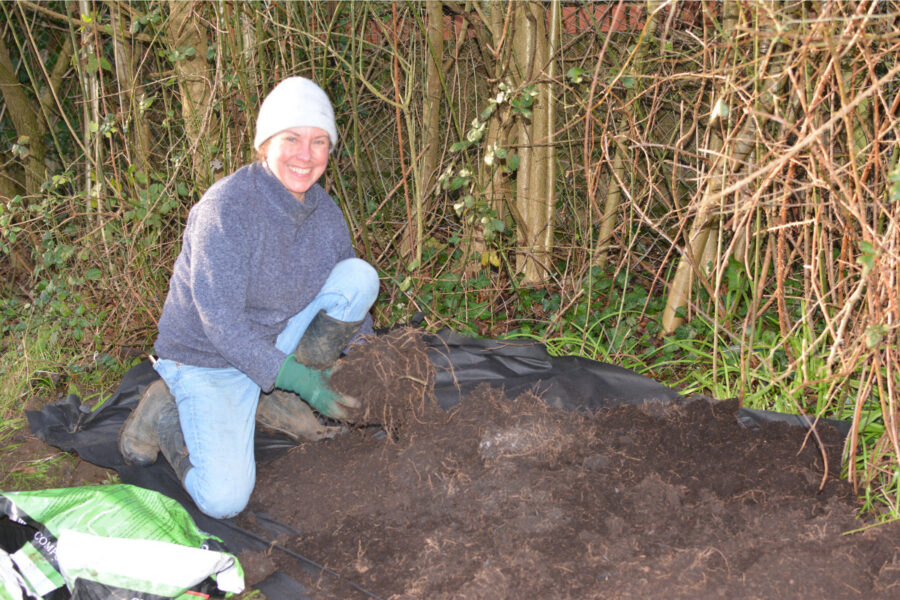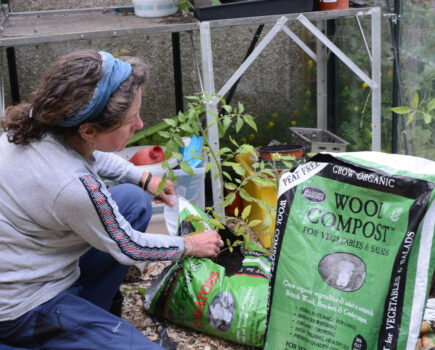Ruth uses elbow grease and organic methods to tackle weeds
When I was 10, my dad took me to see the hottest new film on the block – Star Wars. Even though I was still too young to fully appreciate the charms of a young Mark Hamill and Harrison Ford, it still blew me away and over the years I have remained a fan of (most of) the series.
Now, of course, that famous first film (still the best of the bunch in my book) has been renamed as Star Wars – A New Hope and I always think that the second part of the name chimes well with this month of February.
Because just look around you! Everything is starting to bustle and get busy; the birds are pairing off and claiming their territories, spring bulbs are making their colourful presence felt and trees and shrubs have a bright green fuzz from the first unfurling of their fresh new leaves.
There is a feeling of optimism and hope in the air because no matter what the weather throws at us over the next few weeks, spring and its promise of warmth and growth draws closer by the day.
However, as with the Star Wars saga, in the garden for me there is always another battle to fight and a foe to vanquish, and this week it’s been the turn of Allium triquetrum, or three-cornered leek.
Also known as stinking garlic, this potentially dominant, spreading plant was introduced to the UK in the 1800s and it soon took hold, at times crowding out native plants to the extent that it is now an offence to plant or dump it in the wild.
It its place contained it does have edible uses, but for me it has colonised an area of our front garden and is now spreading through the back garden hedge and it needs to be stopped.
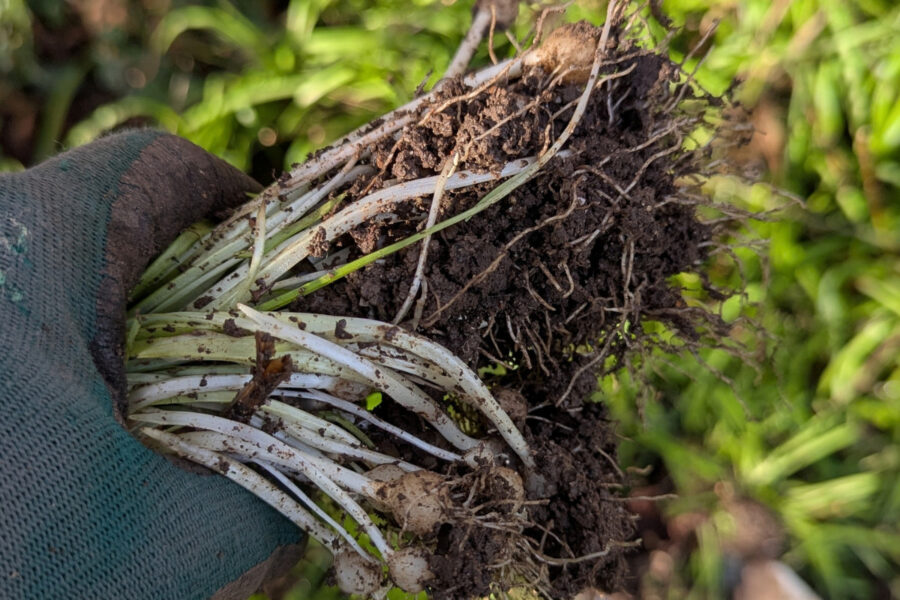
There were a few plants there last year and I tried my hand at using them to make garlic pesto, but the end result tasted like silage and was swiftly binned, I know there are lots of recommended recipes for this plant and please do write in and share some of your favourites, but for me it is ‘neither use nor ornament’, as my mum used to say.
The trouble is, it spreads rapidly via little bulbs that are easy to break from the top growth and hard to dig up.
I spent a good hour getting up what I could, shadowed by a hungry robin who provided a glorious soundtrack to my work, at the end of which the entire garden reeked of rotten garlic. Can you tell I’m not a fan? I then covered the ground where I’d dug the bulbs with weed suppressing material that I anchored down and then mounded high with the spent compost from several of last year’s growbags.
Unfortunately I was unable to unearth every last scrap of Allium triquetrum despite my best efforts because it has spread to inaccessible areas of the hedge. The unearthed bulbs are bound for the local green waste recycling centre because to add them to an unheated compost would simply run the risk of spreading them further around the garden.
But as an opening skirmish in the Battle of Stinking Garlic Ridge it was a success and I shall keep fighting until all the plants are gone!
Using fabric and mulch to block invasive weeds
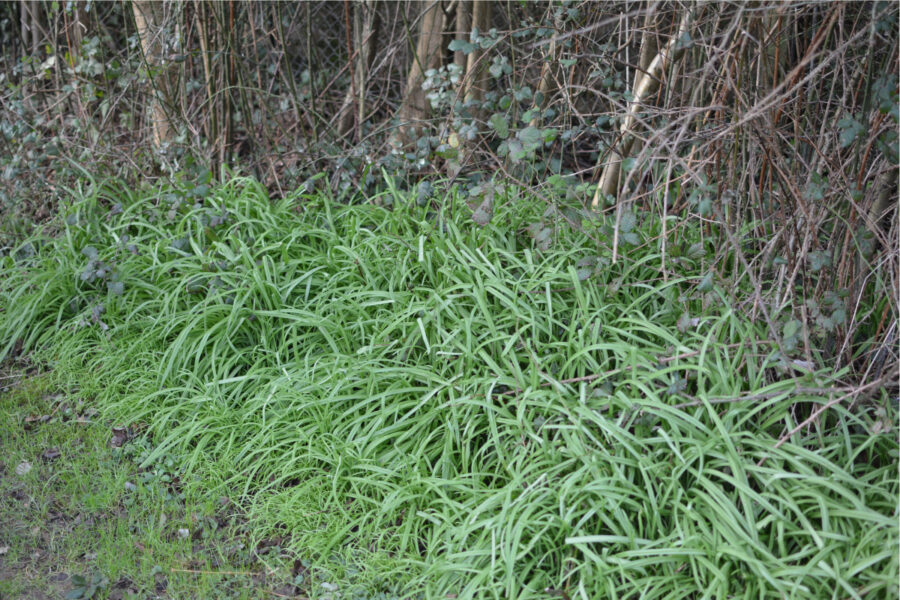
1. Three-cornered leek can be an invasive nuisance and has been spreading like wildfire underneath our garden hedge.
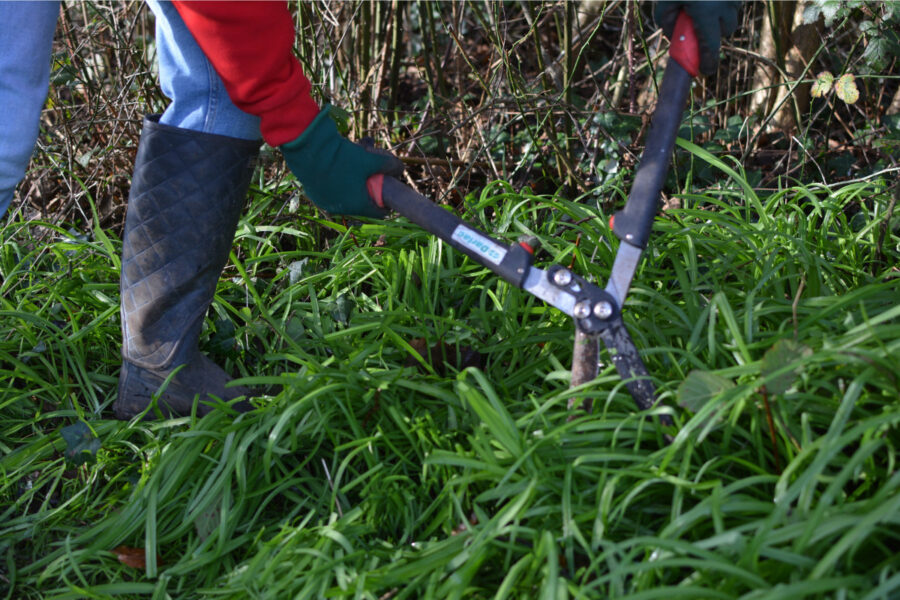
2. I started removing it by chopping back the top growth to make clumps of plants easier to see and dig up.
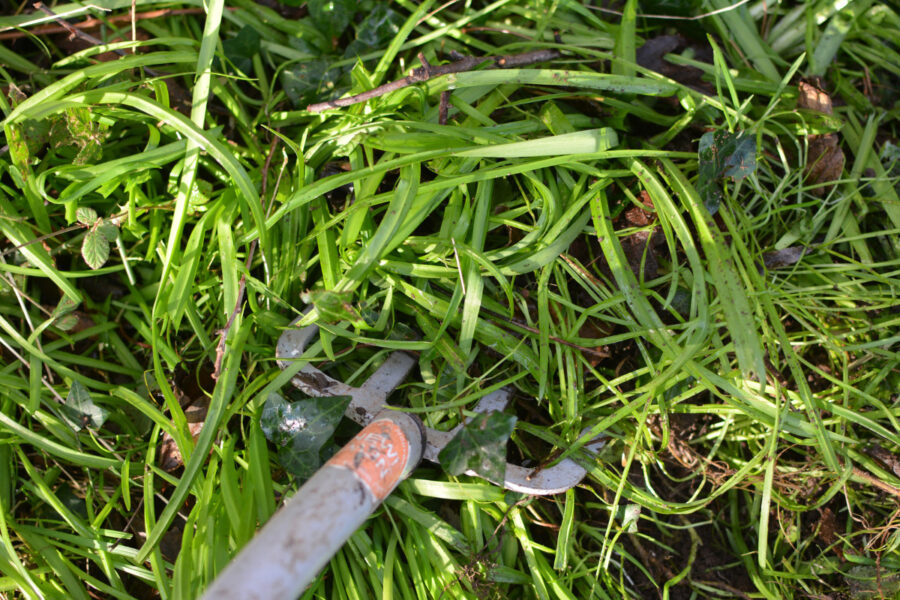
3. I carefully prised plants from the soil, taking care not to lose the bulbs which will go to the local dump.
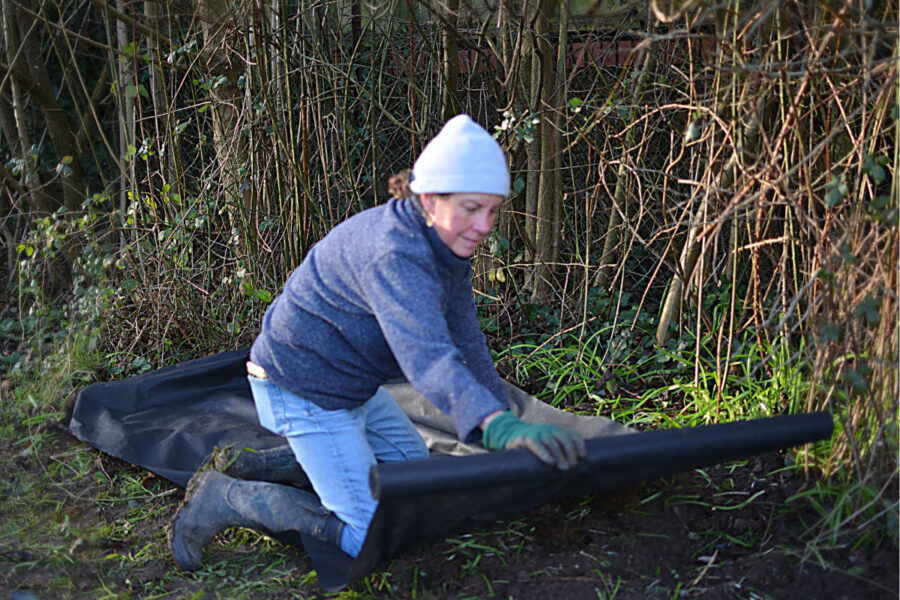
4. I used weed-blocking membrane as a base for mulching, but a few layers of cardboard would work equally well.
Find more tips, advice and articles like this at the Amateur Gardening website. Subscribe to Amateur Gardening magazine now

